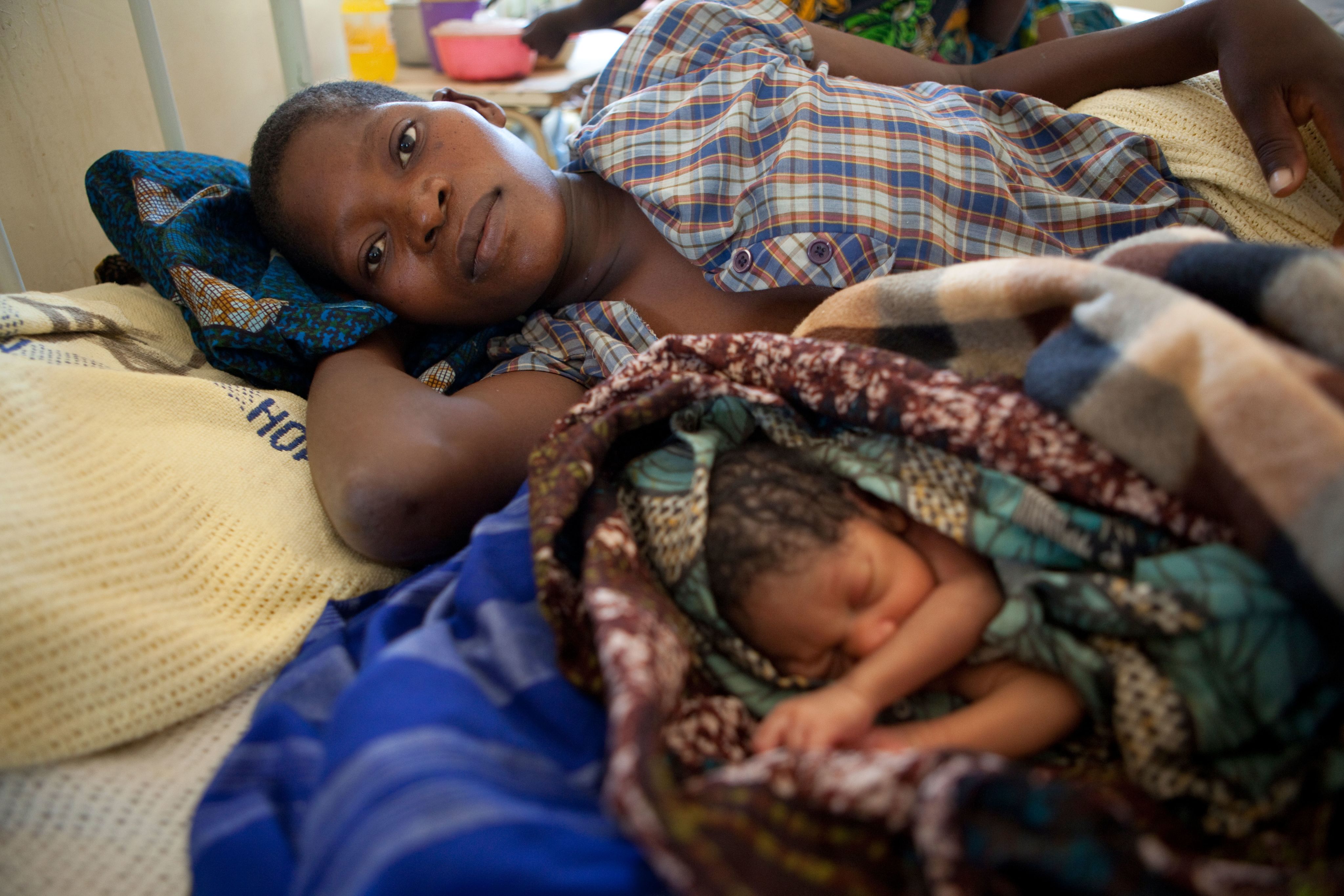The impact of open access (OA) research from Africa
How African researchers are influencing policy

Africa is home to almost 18% of the global population.
And that figure is set to rise rapidly in the coming years, reaching 25% in 2050 and 40% by 2100.
Underrepresented
Yet, the continent is underrepresented in academic research. African researchers were involved in just 3% of global research outputs in 2022 and 2023 (source: Dimensions AI).
One of the reasons for this is a lack of funding, especially for research that addresses issues that are more likely to affect Africa, such as climate change.
Researchers also face barriers to accessing subscription-based research and less funding can prevent researchers from publishing their research open access (OA). This can further reduce the visibility and impact of research from Africa.
Making African research more visible
Our recent Transformative Agreement (TA) with the South African National Library and Information Consortium (SANLiC) aims to boost African OA research. It supports researchers from South Africa, Botswana, and Namibia to publish OA.
Alongside our partnership with Research 4 Life, the agreement also increases access to subscription-based research in these countries.
To mark the agreement and highlight the enormous potential of African research, we're showcasing 10 recent OA articles by African researchers that have influenced the policies of organizations including the World Health Organization (WHO), the United Nations (U.N.), the World Bank, the Partnership for Economic Policy (PEP), and national governments.
1. Quantifying international public finance for climate change adaptation in Africa
Under the United Nations Framework Convention on Climate Change (UNFCCC), low and middle-income countries (LMICs) should get international financial assistance to prepare for, and adapt to, climate change impacts.
This study found that African countries are not getting the funding they need for climate change adaptation. Its authors include Kulthoum Omari-Motsumib and Dr. Christopher H. Trisos, both of the University of Cape Town.
The study has been cited in policy documents that address topics including pandemic recovery, climate change resiliency, and international relations. Organizations including the Council on Foreign Relations, Stockholm Environment Institute (SEI), the U.N. Economic Commission in Africa, and the U.N. Food and Agriculture Organization (FAO) have used the study.
2. Measuring the accuracy of infrared thermometers in health settings
Body temperature measurements (BTMs) are vital for monitoring infectious diseases. Health professionals take BTMs during many interactions with patients.
Infrared thermometer use is growing rapidly in clinics and hospitals across Africa because of convenience and cost savings.
This PeerJ study compared the performance of infrared thermometers with traditional oral electronic thermometers in measuring the body temperature of outpatients in a Nigerian hospital.
The researchers found that infrared thermometers may be less accurate than traditional oral thermometers.
The study is cited in this paper on temporal thermometers by Canada's Drug Agency.
3. Effects of groundwater overpumping in Egypt
The East-Oweinat area of Egypt is important for agriculture due to its high groundwater potential and Government investment. Groundwater is the only source of water in the area. The size of cultivated areas and the number of drilled wells are increasing year-on-year.
This study by Sawsan Moselhy Mohamed Ibrahem of the Egyptian Government's Desert Research Center (DRC) examined the effects of groundwater over-pumping on the sustainability of the Nubian Sandstone Aquifer in the East Oweinat area.
The study featured in this U.N. report on sustainable water management in the Arab region.
4. The political economy of sugar-sweetened beverage taxation
The market for sugar-sweetened drinks is growing in Sub-Saharan Africa. These drinks are linked with weight gain and non-communicable diseases (NCDs) such as cardiovascular diseases and diabetes. These diseases are becoming more common in Africa and have a significant economic impact on the region.
This article, published in a special issue of Global Health Action, examines beverage taxation and highlights opportunities for reducing NCDs linked to sugar-sweetened drinks. One of its recommendations is public health communications that show the economic impact of diagnosing and caring for people with NCDs.
Organizations that have used the research include the WHO and the World Bank. The article is cited in reports on subjects such as financing health interventions and improving how unhealthy products are taxed.
Researchers from South Africa, Zambia, Uganda, Kenya, Tanzania, Namibia, Rwanda, and Botswana contributed to the research.
5. Women's capacities for agricultural innovation in Kenya and Nigeria
Researchers suggest women may have less freedom than men to venture outside their homes and beyond in some cultures. In an agricultural setting, this can limit their access to seeds and fertilizers, and prevent them from getting involved in farming groups, training, and other information exchanges.
This study investigated how cultural norms in some African regions affected women's ability to engage with agricultural innovation processes.
It examined the effect on women, men, and farming in general.
The research is cited in The status of women in agrifood systems U.N FAO report.
6. Reviewing bacterial resistance to antibiotics
This review by researchers at Ain Shams University in Cairo, Egypt examined the existing research on bacterial resistance to carbapenems.
Carbapenems are types of antibiotics that can be used to treat severe bacterial infections. Bacterial resistance to carbapenems is a serious public health threat, as it prevents some diseases from being treated.
The review focused on why resistance happens, the history and spread of resistance, and how to detect carbapenem resistance in infections. It also discusses possible options for treatment.
The review is cited in this WHO Global antimicrobial resistance and use surveillance system (GLASS) report.
7. Implementing inclusive education in South Africa
Teachers play a key role in inclusive learning, which gives everyone the right to quality education.
This paper identifies resources for the inclusion of students with special educational needs (SEN). It examines the workload and training of teachers and identifies good practices in implementing the inclusion of learners with SEN.
Its findings are cited in this World Bank report on delivering inclusive education in Africa and Asia.
8. Using geothermal heat pump systems to cool buildings in hot climates
It's estimated around a third of the energy used in buildings worldwide is related to cooling. Much of this energy is from fossil fuels.
This study by researchers based in Egypt examines how geothermal heat pump systems, which take their energy from under the surface of the earth, can cool buildings in hot and dry climates.
The study found a 19.7% reduction in electricity consumption and carbon emissions in buildings that use geothermal heat pump systems.
Authors at the Center for Global Development (CGD) cited the study in a report on the labor skills needed for a transition from fossil fuels to cleaner energy sources.
9. Measuring Maternal Near Miss (MNM) in a middle-income country
The WHO Maternal Near Miss (MNM) approach is a set of steps that can be used to audit and improve the quality of maternal healthcare.
It focuses on women who survived life-threatening conditions during childbirth and pregnancy. Whether the approach is effective depends on the setting and resources available.
This study examined how the WHO's Maternal Near Miss (MNM) approach can be used in Namibia and other middle-income countries to reduce deaths due to complications during pregnancy and childbirth.
The study is cited in this WHO bulletin article on providing maternal healthcare in low-resource settings.
10. Mobile phones, gender, and female empowerment in sub-Saharan Africa
This study explores the relationship between phone usage, female empowerment, and chronic poverty, and its repercussions on education and entrepreneurship. The researchers surveyed young people across urban and rural locations in Ghana, Malawi, and South Africa.
It found that while phone ownership provides some benefits, it can also lead to emotional and physical abuse, learning disruption, harassment from men and boys, and many other negative effects.
The study's findings were featured in this PEP paper on measuring poverty in Togo.
You might also like:
- SANLiC and Taylor & Francis announce new open access program for researchers in South Africa, Botswana, and Namibia
- African studies ebook collection
- How the growth of open access research in Mexico is influencing global policy
- Diversity in academic publishing: How can publishers help repair the 'leaky pipeline'?
 China
China Africa
Africa










